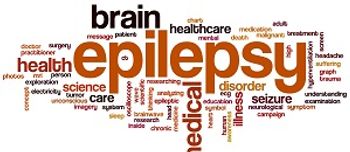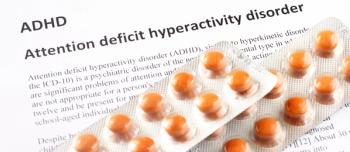
Nearly one in 5 adults with epilepsy show symptoms of attentiondeficit/ hyperactivity disorder (ADHD), according to a recent study.

Nearly one in 5 adults with epilepsy show symptoms of attentiondeficit/ hyperactivity disorder (ADHD), according to a recent study.

ADHD and conduct disorder may be associated with increased alcohol and tobacco use in in young adolescents, a study indicates.

A study examining the frequently used pyrethroid pesticide deltamethrin suggests that the substance may affect the development of the brain's dopamine system, potentially increasing the risk of ADHD in children.

While evidence suggests that children with ADHD fare better when treated with both stimulant medication and behavior therapy, a study has found that many of the children who are prescribed ADHD medication do not receive psychotherapy.

The new test aids health care professionals and patients in determining whether a specific medication will address ADHD symptoms effectively.

About 17% of college students misuse stimulant medications prescribed for attention deficit hyperactivity disorder (ADHD), according to a new study published in the Clinical Child and Family Psychology Review.

Children born to parents with bipolar disorder have a strong likelihood of experiencing episodes of manic symptoms themselves.

Because there are similarities in the symptoms of bipolar disorder and attention-deficit/hyperactivity disorder, differentiating between the 2 psychiatric conditions can be challenging for clinicians.

Although children with attention deficit hyperactivity disorder often experience decreased appetite and sleep disturbances during methylphenidate treatment, a study published in the Journal of Research in Pharmacy Practice indicates that those adverse drug reactions (ADRs) are mostly mild and not serious.

Shire's lisdexamfetamine dimesylate (Vyvanse) today became the first and only FDA-approved medication to treat binge-eating disorder in adults.

Nearly 1-in-5 adults with epilepsy show symptoms of attention deficit hyperactivity disorder.


Stimulant-treated adolescents with attention deficit hyperactivity disorder who switch to atypical antipsychotics show significantly greater drug augmentation, health care resource utilization, and costs compared with their counterparts who switch to nonantipsychotics.

ADHD medications are prone to the same abuse, misuse, and diversion as opioids.

The FDA has granted priority review to a supplemental New Drug Application that would expand the use of lisdexamfetamine dimesylate (Vyvanse) to treat adult patients with binge eating disorder.

Autism risk shown not to increase in children exposed to antidepressants in utero when researchers accounted for depression severity.

A new meta-analysis finds that patients with ADHD are significantly less likely to smoke if they take stimulant medications-and that the effect is even stronger with consistent adherence.

Although children with attention-deficit/hyperactivity disorder (ADHD) are typically very active, the results of a recent study suggest that they are more likely to become inactive and obese as teenagers.

Children diagnosed with attention-deficit/hyperactivity disorder may be more likely to be diagnosed with asthma as well, according to the results of a new study.

Children whose mothers used acetaminophen during pregnancy had an increased risk for behavioral problems related to ADHD, but experts advise that more research is required to investigate the association.

Although attention-deficit/hyperactivity disorder is a long-term condition, it can be managed with proper treatment.

Although attention-deficit/hyperactivity disorder is a long-term condition, it can be managed with proper treatment.

The portion of adults using ADHD medications increased 53.4% from 2008 through 2012, compared with 18.9% among children, according to a report from Express Scripts.

Medications that have been on the market for quite some time are not immune to medication errors, even errors involving drug name confusion.

A meta-analysis of studies that examined stimulant use in children diagnosed with brain tumors found that the medication may improve cognitive processes, just as it does for children with ADHD.